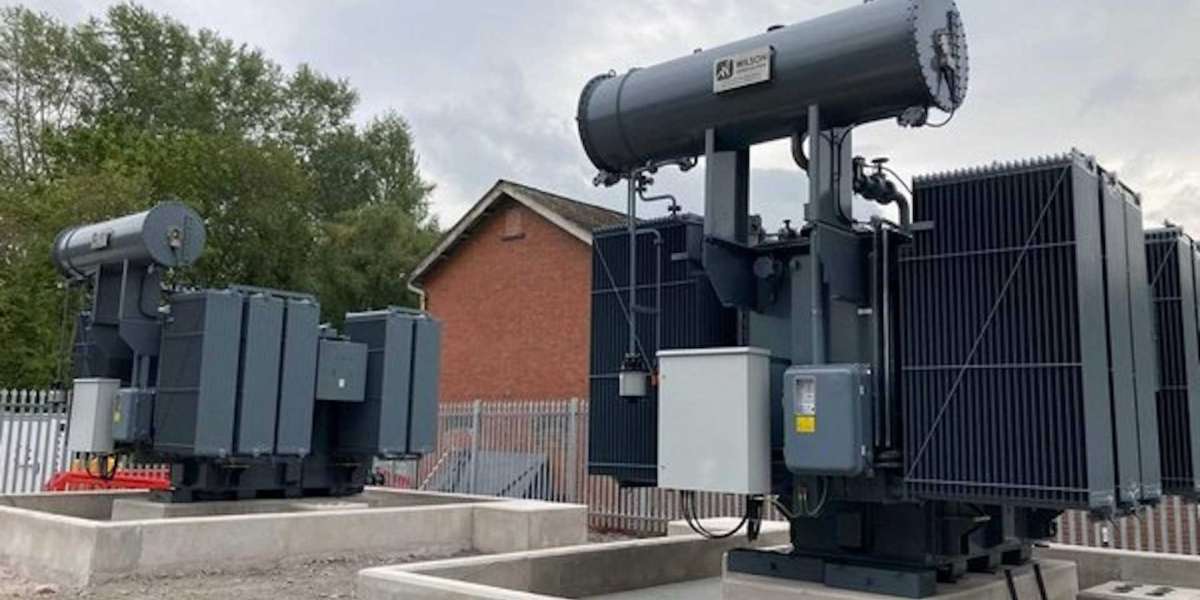Electricity is the lifeblood of our modern world. From homes and offices to factories and renewable energy installations, reliable power is essential for daily operations. Central to the efficient distribution and management of electricity are electrical transformers, devices that make it possible to transmit energy safely, efficiently, and reliably across short and long distances.
What Are Electrical Transformers?
An electrical transformer is a static device that transfers electrical energy between circuits through electromagnetic induction. Its primary function is to step up (increase) or step down (decrease) voltage levels depending on the requirements of the system it serves. By adjusting voltage, transformers help minimise energy losses, protect equipment, and ensure that electricity is delivered at safe levels for various applications.
Transformers are widely used in power generation, transmission, and distribution, making them indispensable in both residential and industrial settings.
Types of Electrical Transformers
Electrical transformers come in several types to serve different purposes:
Power Transformers: Used in transmission networks to step up or step down high voltages for efficient long-distance power transfer.
Distribution Transformers: Step down voltage for commercial, industrial, and residential use.
Isolation Transformers: Provide electrical isolation for sensitive equipment to protect against faults.
Three-Phase Transformers: Commonly used in industrial and commercial applications requiring high-power delivery.
Instrument Transformers: Designed for measurement and protection in high-voltage systems.
Each type is engineered for specific applications, ensuring reliability and efficiency in the system it serves.
Importance of Electrical Transformers
The role of electrical transformers extends far beyond simple voltage conversion. They are essential for:
Efficient Power Transmission: By stepping up voltage for long-distance transmission, transformers reduce energy loss.
Equipment Protection: Maintaining consistent voltage prevents damage to machinery, electronics, and other sensitive devices.
Cost Efficiency: Reduced power loss and improved energy management lower operational costs.
Grid Stability: Transformers help maintain a balanced and stable power supply across industrial, commercial, and residential networks.
Without electrical transformers, modern electricity systems would struggle to provide reliable and efficient energy.
Applications of Electrical Transformers
The applications of electrical transformers span multiple sectors:
Industrial: Powering heavy machinery, production lines, and automation systems.
Commercial: Supplying electricity to offices, malls, hospitals, and IT facilities.
Residential: Ensuring safe and reliable electricity for homes.
Renewable Energy: Integrating solar, wind, and hydro power into national grids efficiently.
Infrastructure: Supporting railways, airports, and large-scale transport networks.
This wide-ranging usage highlights how vital transformers are to modern life and industrial development.
Advantages of Modern Electrical Transformers
Modern electrical transformers offer numerous benefits:
Energy Efficiency: Advanced designs minimise losses and maximise output.
Durability: Built to withstand extreme conditions and long-term operation.
Scalability: Available in a range of capacities to meet varying power demands.
Sustainability: Environmentally friendly insulation materials and cores reduce carbon footprint.
These advantages make them indispensable for industries, utilities, and infrastructure projects worldwide.
The Future of Electrical Transformers
As energy demands grow and renewable sources become more prevalent, electrical transformers are evolving to meet new challenges. Smart transformers with real-time monitoring, predictive maintenance, and automated controls are becoming standard, ensuring safer, more efficient, and eco-friendly power distribution.
The integration of digital technologies and sustainable materials will continue to shape the next generation of transformers, providing both reliability and reduced environmental impact.
Conclusion
Electrical transformers are far more than just electrical devices—they are the backbone of modern power systems. From ensuring energy efficiency to supporting industrial operations and integrating renewable energy, they are essential for a stable, reliable, and sustainable energy future. Investing in high-quality transformers ensures uninterrupted power, optimised performance, and long-term reliability for homes, industries, and infrastructure.







